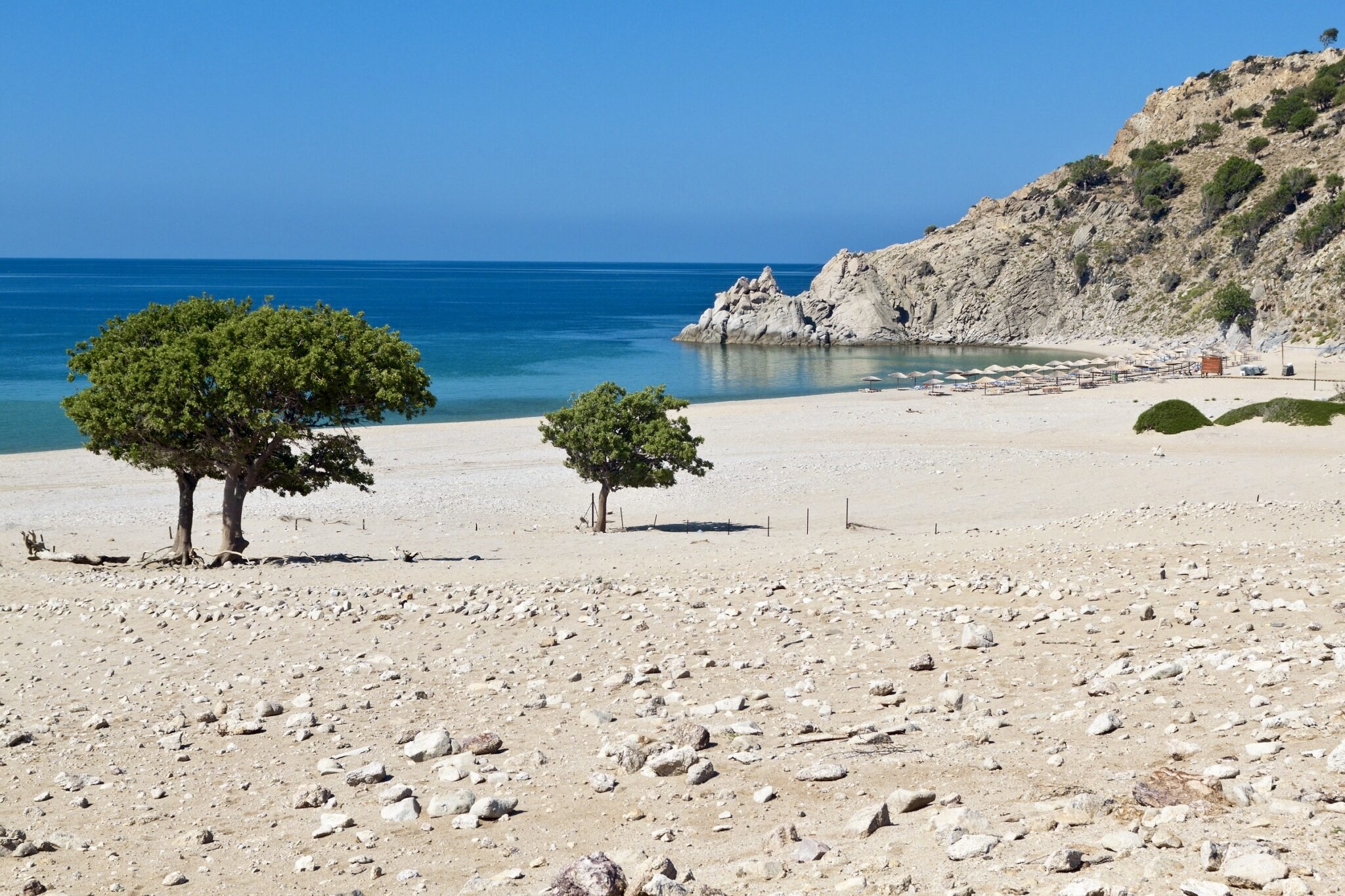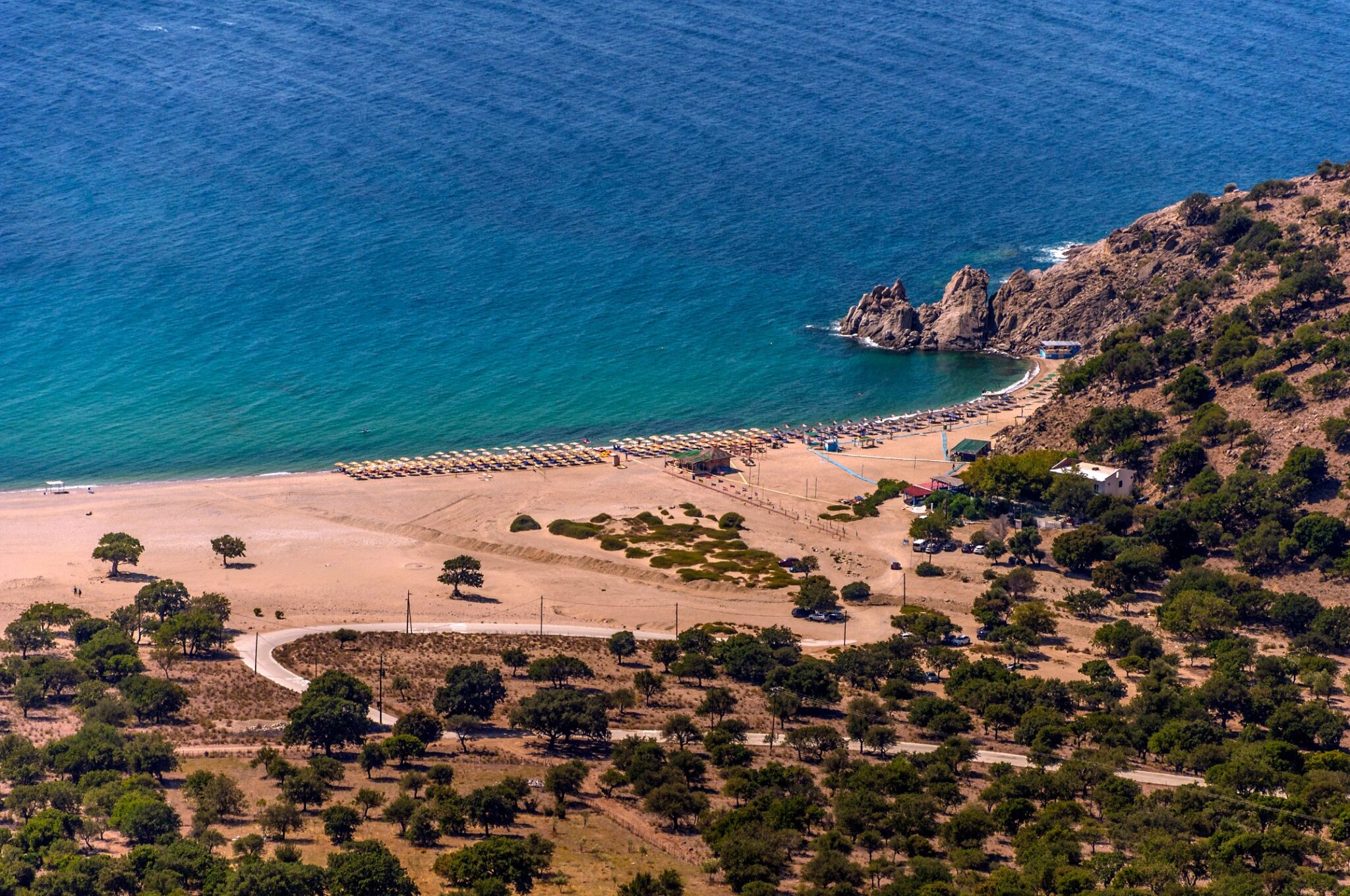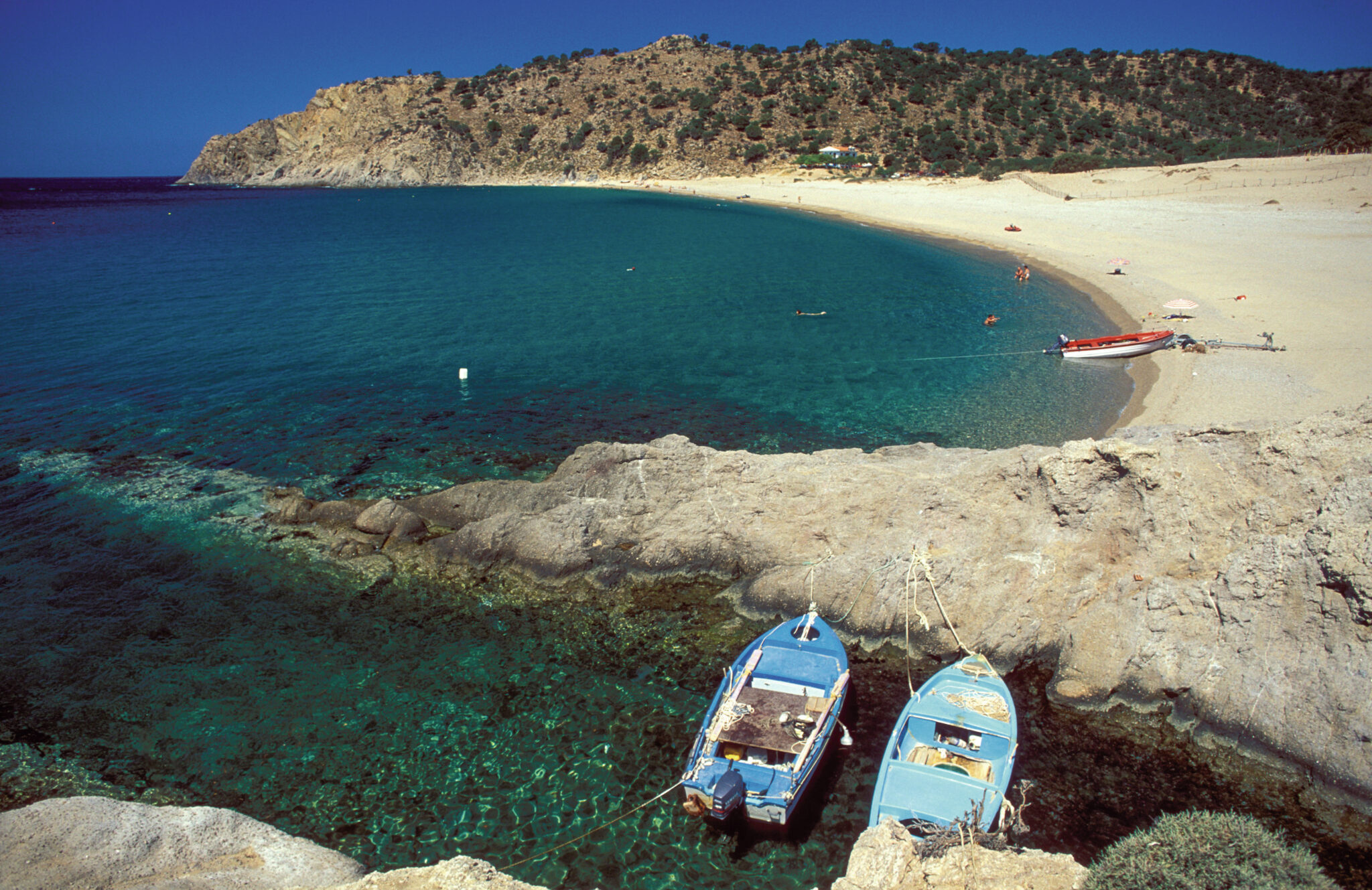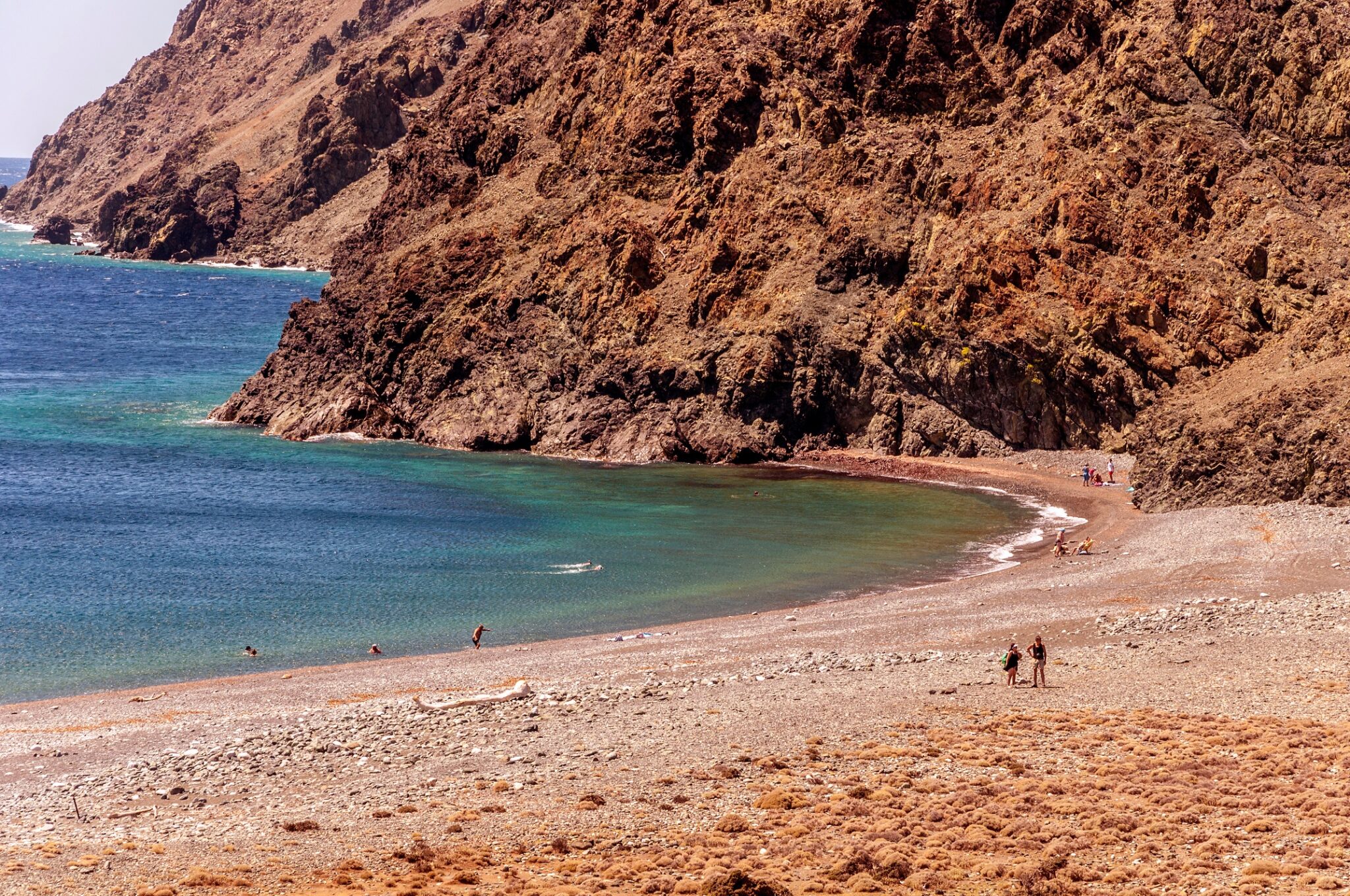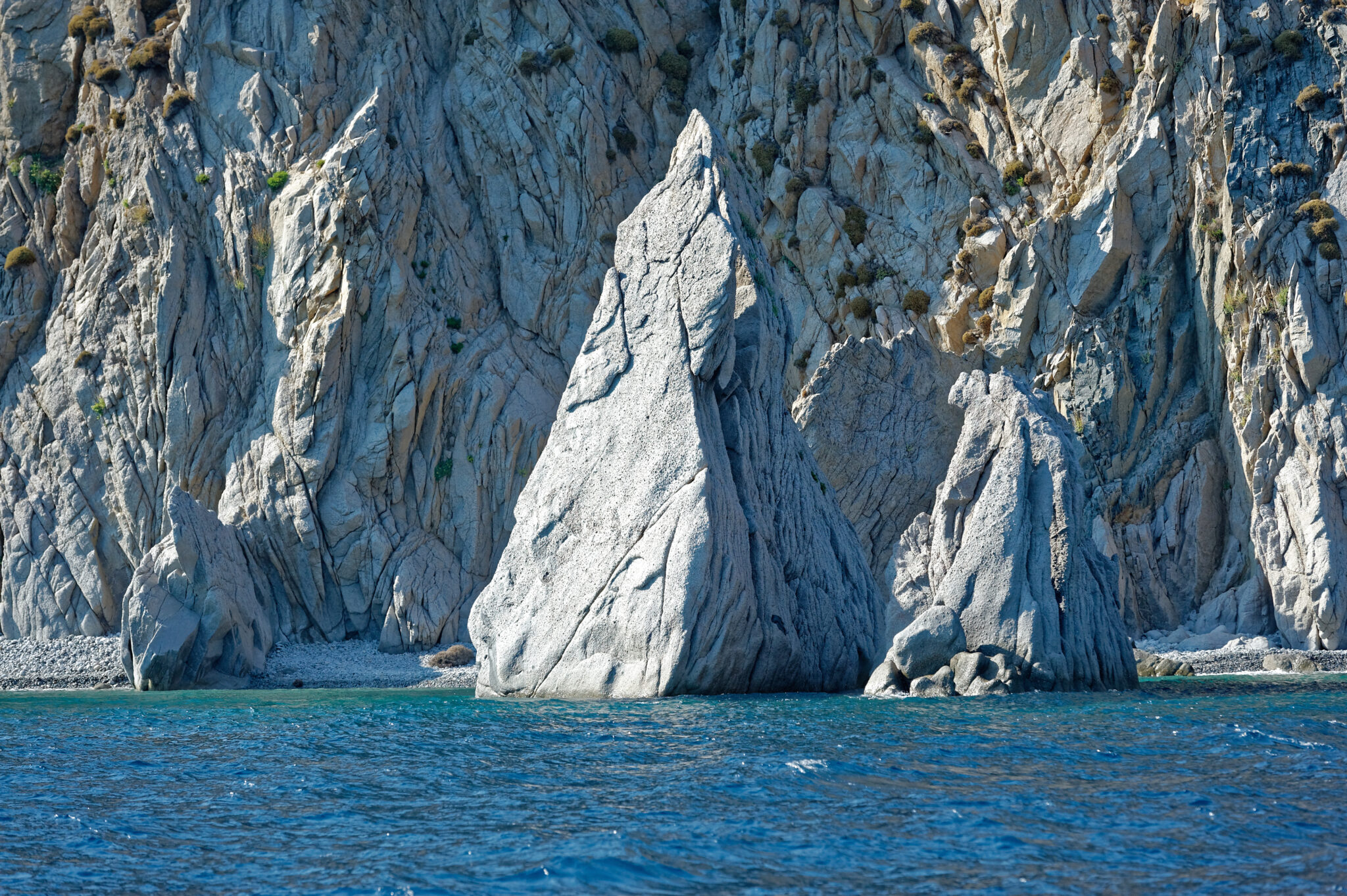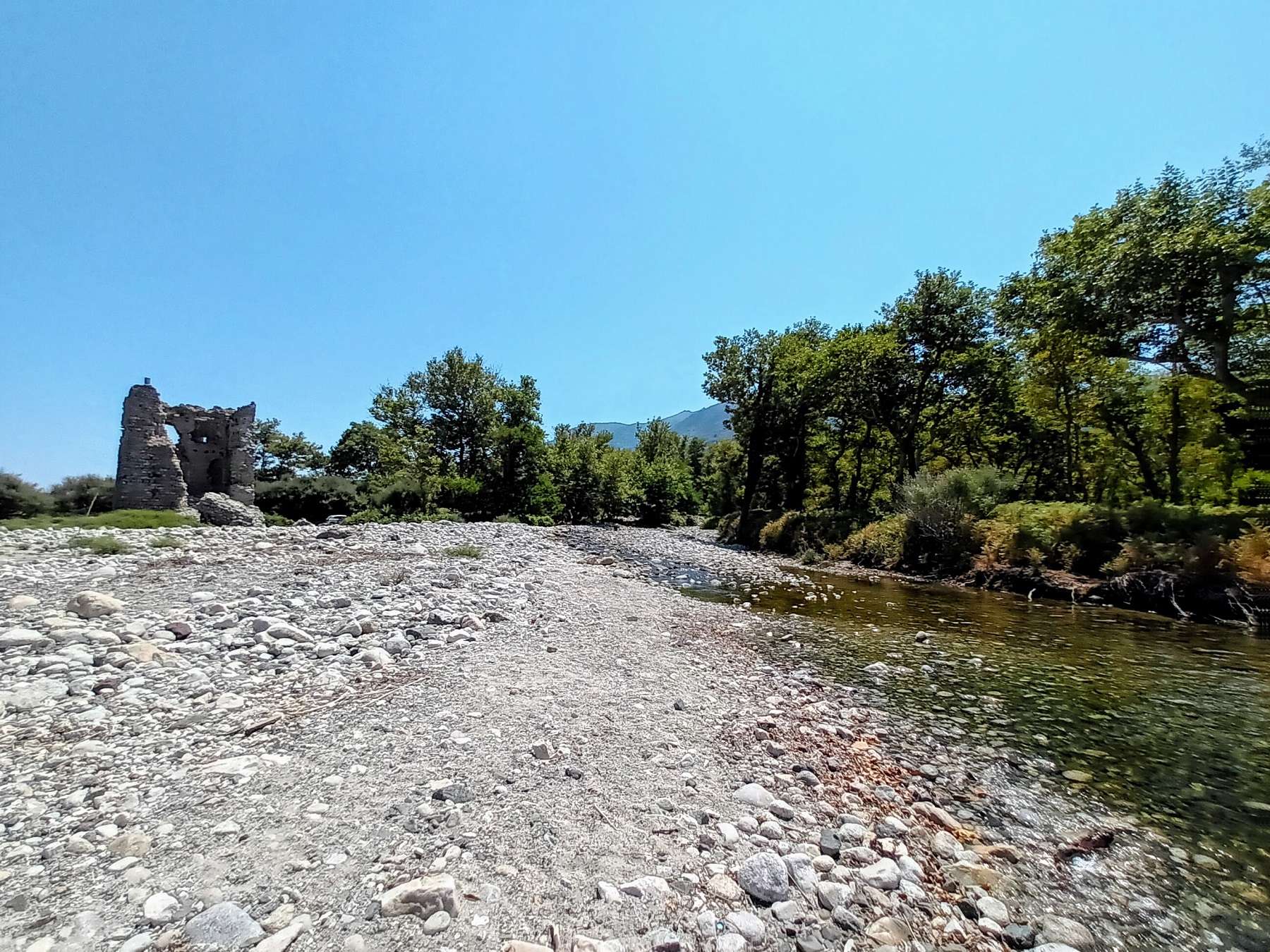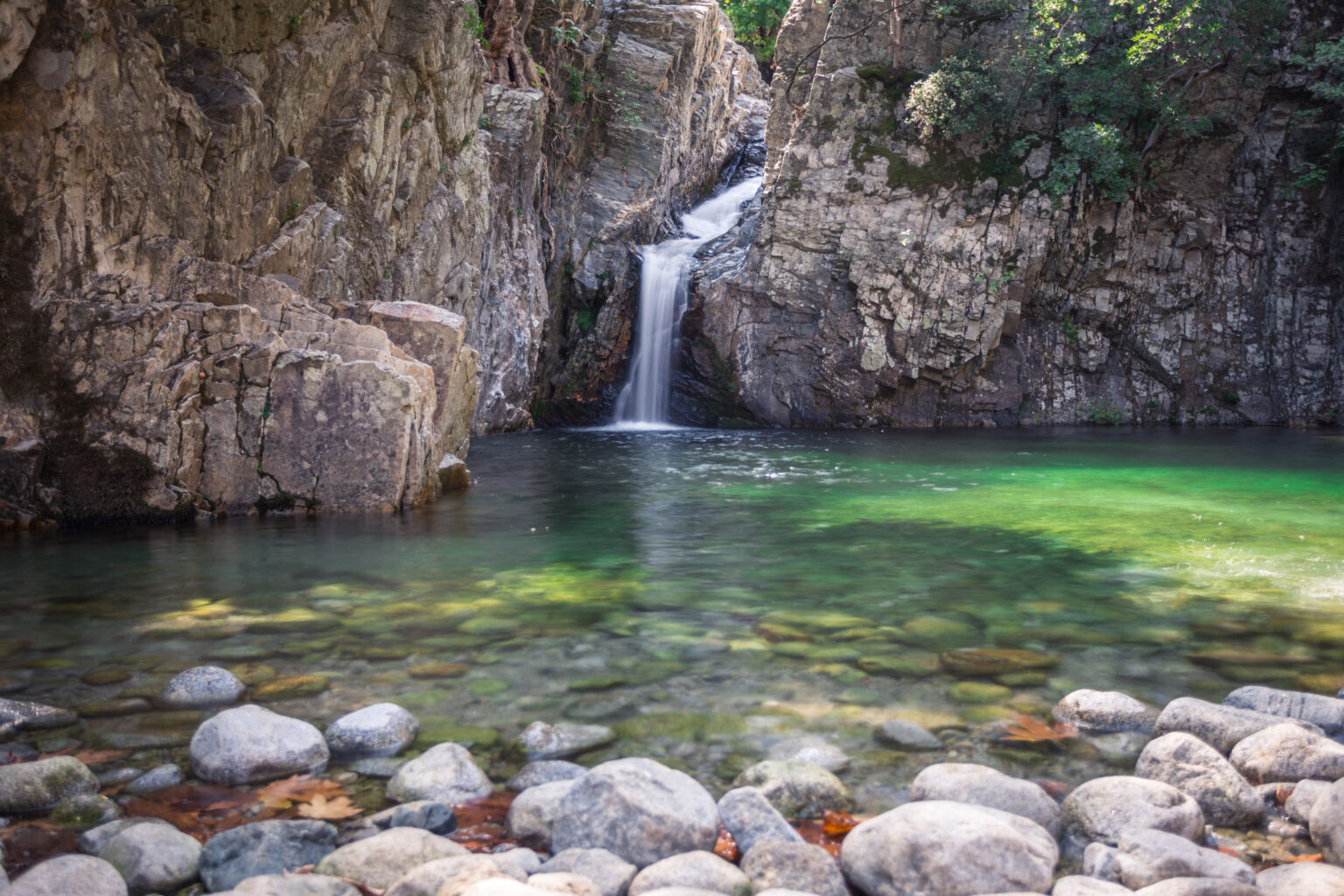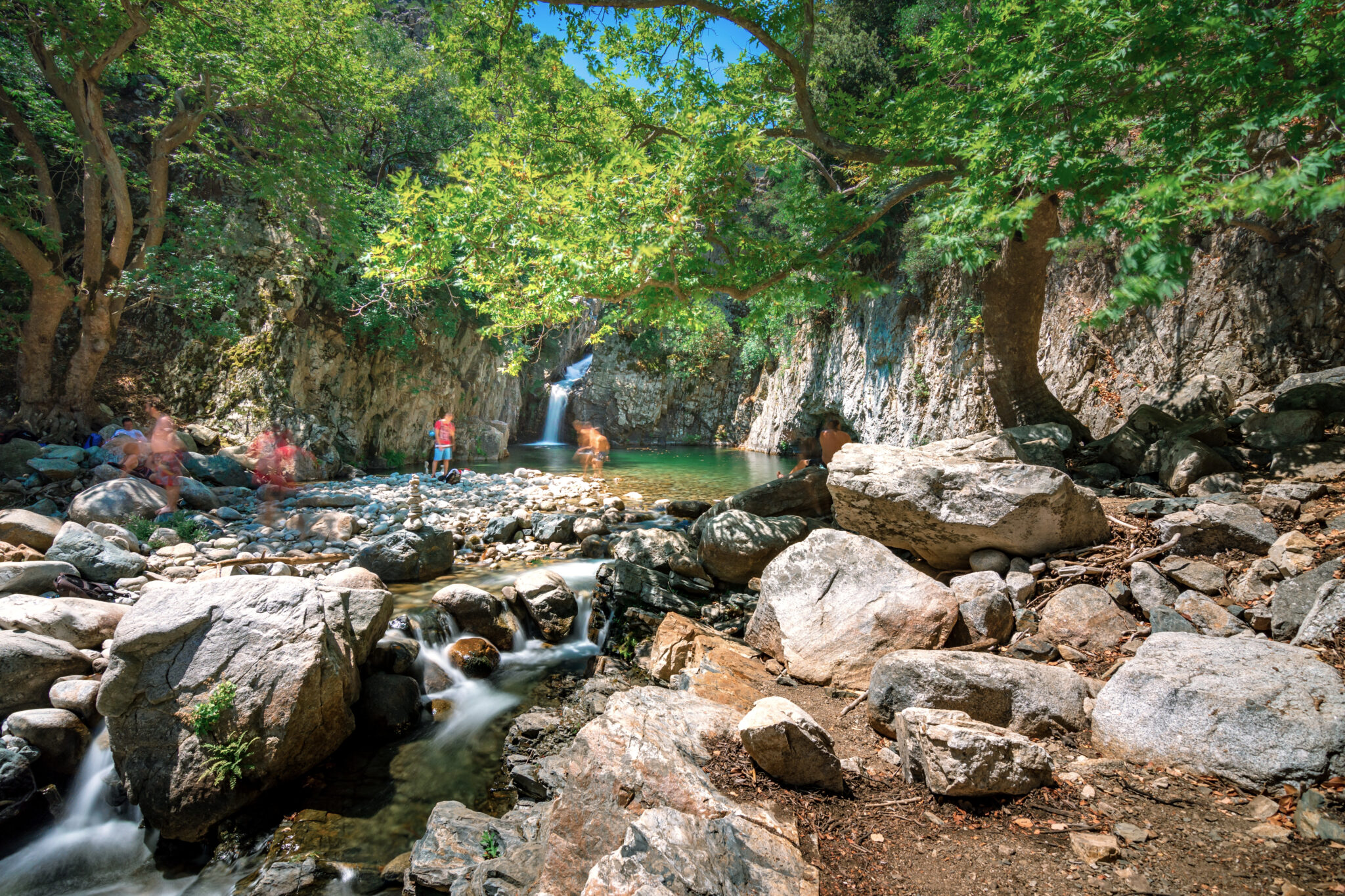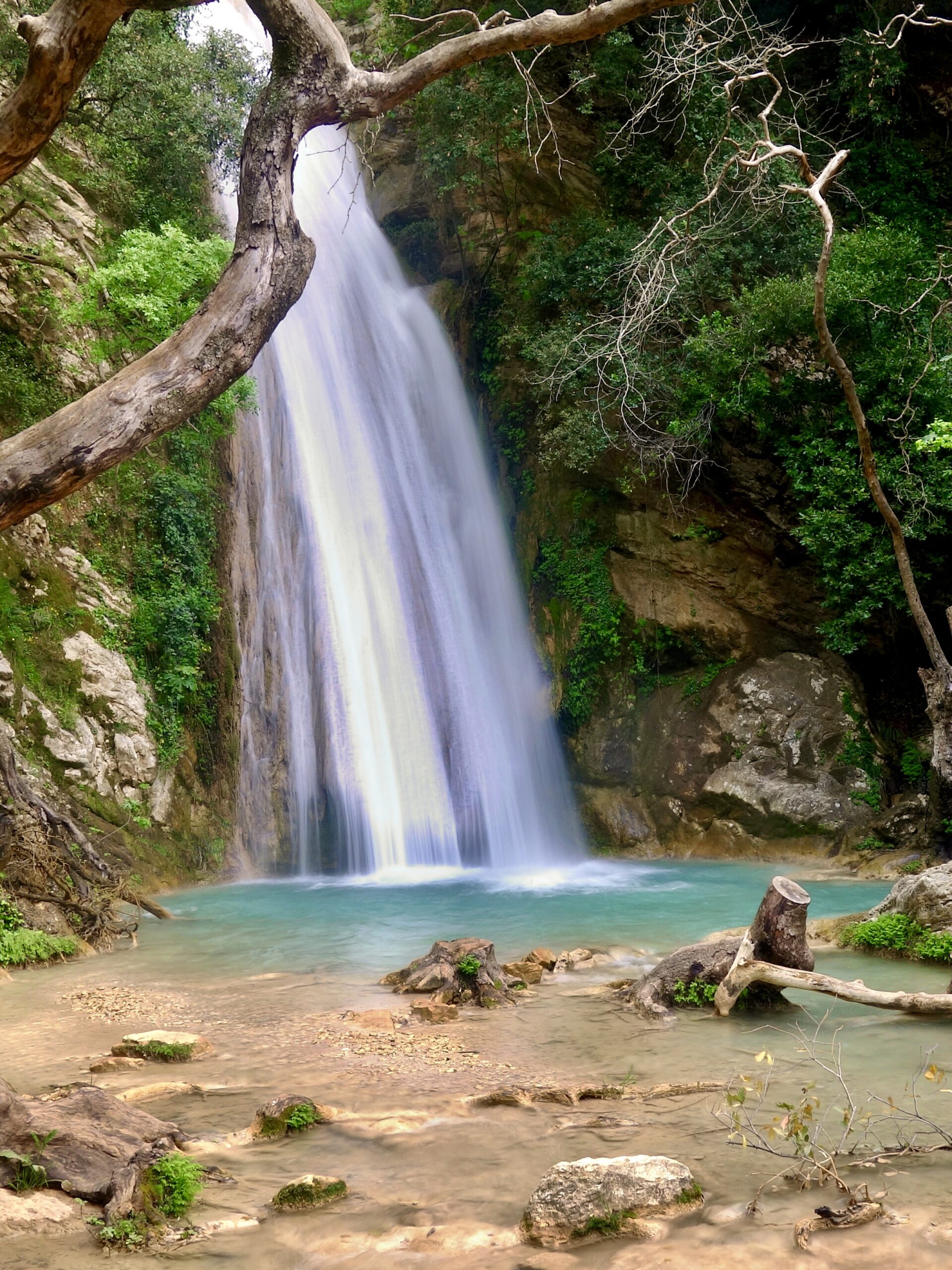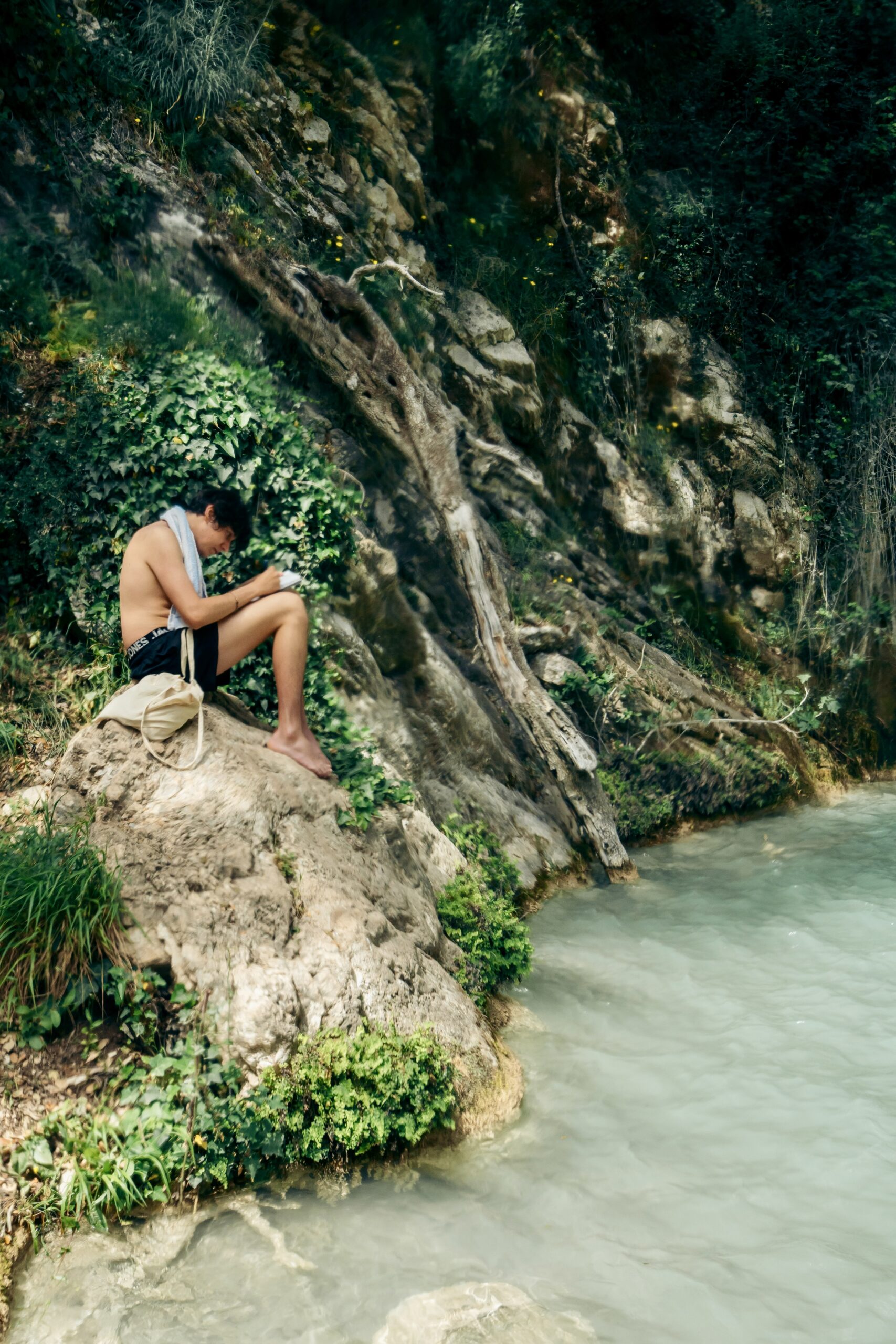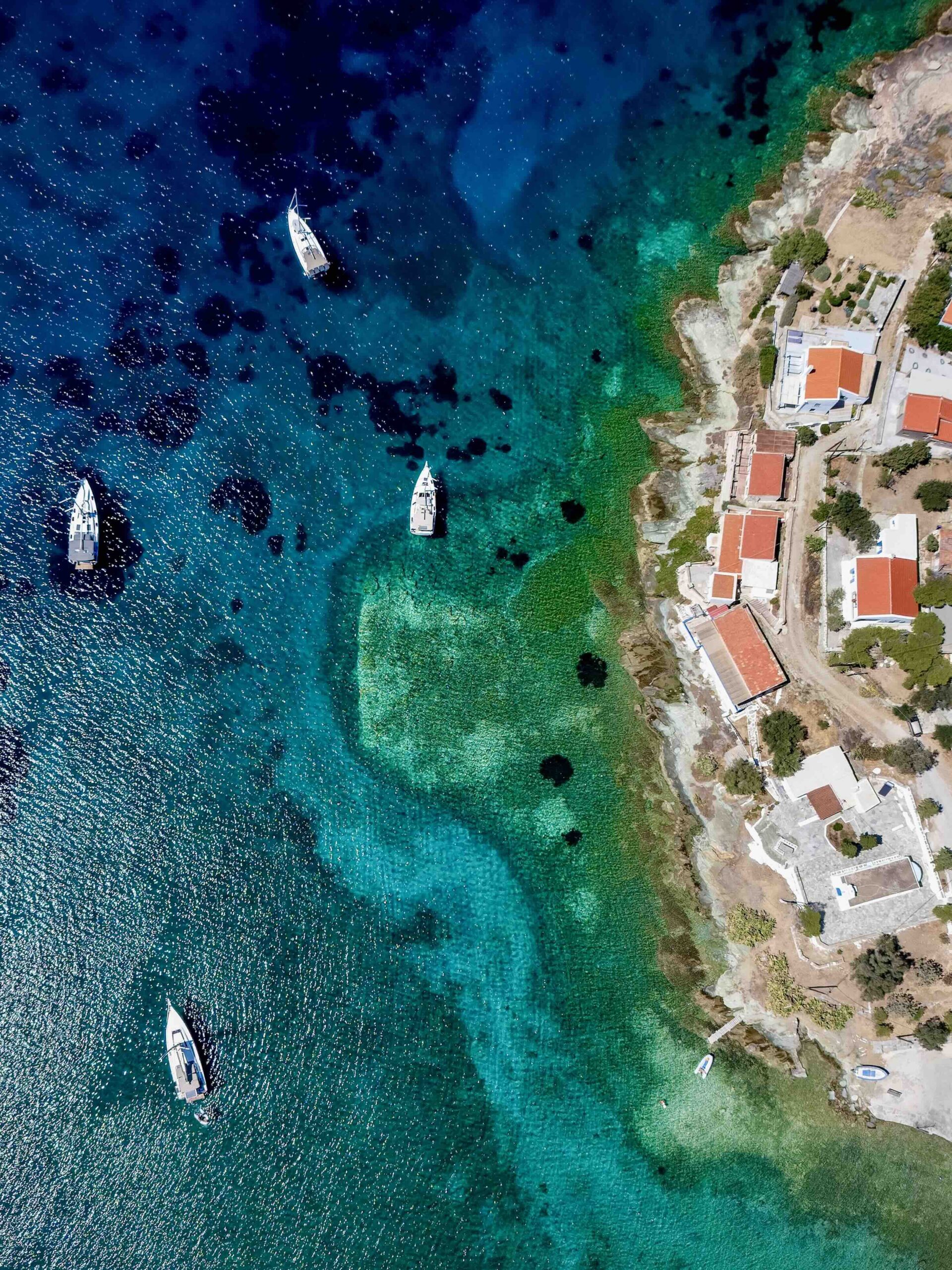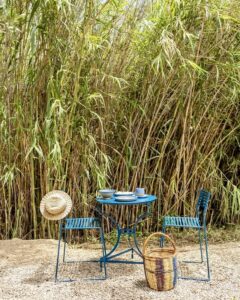Samothraki has a mesmerisingly unique geographic profile. The entire island is essentially a towering mountain—Mount Saos—soaring to nearly 1,600 meters. Its highest peak is called Fengari, meaning “Moon,” because it’s so tall it seems to obscure the moon itself. The island’s name, in fact, comes from ancient Greek: Saos (Moon) and Thrace, meaning “Moon-Thrace.”
Samothrace’s steep, rocky slopes tumble down into the deep blue Aegean, sometimes ending in sheer cliffs, sometimes giving way to narrow, rugged paths winding through stone, and—on rare occasion—opening to sandy beaches where the serenity of nature meets the rhythmic crash of waves.
If you’re looking for organized beaches with fine sand and easy access, this island might not be for you. But if you crave adventure, unspoiled landscapes, and the raw beauty of ancient myths, Samothrace delivers. Here, you’ll sail past towering gray cliffs, explore lush forests, and sense the presence of stories centuries old—like the Kabeirian Mysteries once held at the Sanctuary of the Great Gods, where, legend says, Alexander the Great’s father first saw Olympias.
This is an island where winged Nikes seem poised to take flight, where time stands still, and where you’ll either be completely drawn in—or turned away by its wildness.
Pachia Ammos
Pachia Ammos is the most popular and easily accessible beach on the island, located about 15 kilometers from the main port of Kamariotissa. A paved road leads southwest from Chora to this long stretch of golden sand and clear waters, perfect for swimming and playing with kids.
The route offers beautiful views of the island’s nature and passes through charming villages like Lakkoma and Alonia.
Kipos
Kipos, the island’s most remote beach, lies on the southeastern tip, far from Kamariotissa. Covered in fine, reddish pebbles and surrounded by a stark, almost volcanic landscape, Kipos is the ideal place for those seeking peace and isolation.
The rocky terrain meets the sea in dramatic harmony, and the energy of ancient myths feels tangible here. As a bonus, Kipos offers one of the most dazzling sunsets on the island.
Vatos
Vatos is a beach of otherworldly beauty, located just east of Pachia Ammos. It’s a long, white-sand beach backed by a dramatic seascape where jagged rocks rise straight out of the Aegean.
The best way to get there is by boat—a route that reveals the cascading Kremastos waterfall plunging directly into the sea, and a rock formation known as “Tis Grias ta Pania,” resembling great folds of fabric caught in the wind. Expert hikers can also reach it on foot via the rugged Vatos Gorge, one of Mount Saos’ most challenging and remote trails, recommended only for experienced trekkers.
Pyrgos Tou Fonia
Fonias Tower beach takes its name from a crumbling medieval tower that still stands at one end. With gray pebbles and turquoise waters, it’s one of Samothrace’s most atmospheric beaches—remote, mystical, and timeless.
A local legend tells of a murder committed long ago in the tower, lending the area its name, which translates to “Murderer.” Nearby flows the Fonias stream, which forms some of the island’s most stunning natural pools or “vathres,” for which Samothrace is famous.
Therma Loutra
Therma Loutra, located in the village of the same name, is a relaxed pebble beach with a casual beach bar, sun loungers, umbrellas, and a canteen for essentials. Behind you rises the forested mass of Mount Saos, offering a striking contrast to the sea.
This is one of the island’s most picturesque swimming spots and is easily reached by car from the port.



